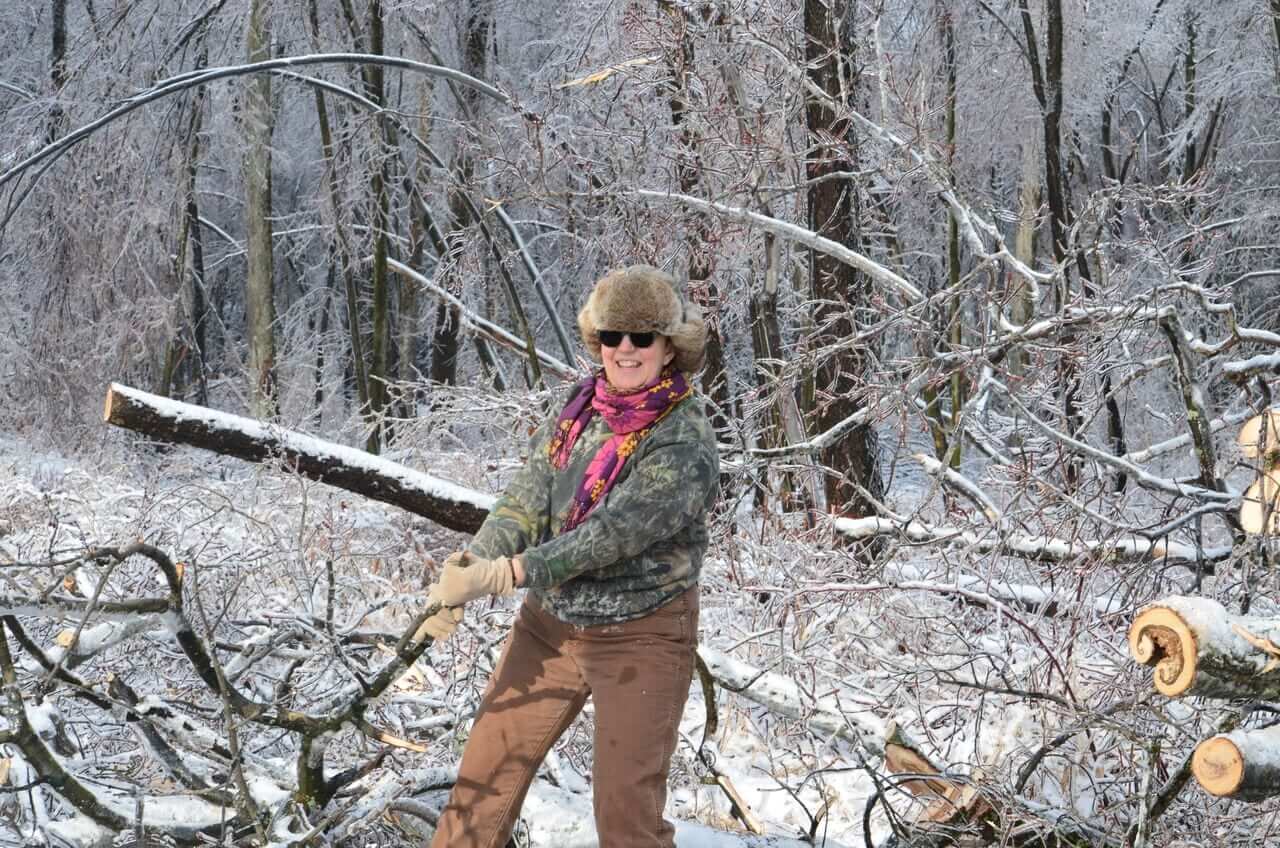Guest blog: Turbines among the trees: How wind power helps preserve American forests
Susan Shoemaker-Benedict, CPA is a Central Pennsylvania Tree Farmer, chair of the Pennsylvania Tree Farm Committee and a member of the American Forest Foundation’s National Public Affairs Committee.
Wind power is an affordable, reliable means of generating electricity while emitting no carbon pollution, but did you know wind can also aid in forest conservation?
In 2014, wind energy reduced U.S. carbon pollution by 126 million metric tons – equal to 26 million cars’ worth of carbon emissions – by replacing dirtier forms of electricity generation. By AWEA’s count that means wind has reduced U.S. electricity section carbon pollution by 28 percent since 2005, but that number could be even higher if you consider other factors such as wind power’s lesser known contribution to forest conservation.
Wind energy provides a unique opportunity for our country to facilitate forest preservation while reducing our carbon footprint.

Forests provide many ecosystem service benefits to our society as a whole. Acting like giant filters, they clean our air and water and store a tremendous amount of carbon. A forest can store up to 0.33 metric tons per acre of carbon annually. In the United States more acres of forest are privately held than any other category, with an estimated 420 million acres. Private forest landowners are providing a tremendous environmental service to our country while also supporting rural economies with good paying jobs and paying property and other taxes.
Unfortunately this picture could change in the near future. Our forests are under attack from an increasing number of invasive species, development pressures are rising, property taxes are increasing and revenues from the sale of timber have been declining for years. The housing sector is a prime driver of timber prices and our nation has been in a housing slump since the “Great Recession” started in 2008. In addition, increased regulations and higher fuel prices have further eroded profits from timber harvests.
Timber is a long-term crop. In Northeast hardwood forests timber harvests only occur every 60 to 100 years on a typical property. It is difficult for families to continue to pay all of the current costs when their generation may not ever see any revenue to offset these costs.
A bright spot in this otherwise grim outlook is wind farming in forested landscapes. Wind farms provide a regular source of income through royalty payments. These are long term leases for up to 29 years or more. They provide a predictable revenue stream during the life of the lease. With proper lease covenants they can be appropriately integrated into a forest management plan supporting sustainable forest management practices.
Currently 40 percent of family forest landowners are aged 65 or older. Within the next 25 years there will be inter-generational transfers happening on forestland land held by these older owners. Families love their forests, however without a good transition plan and adequate revenue, taxes take their toll and many forests transition to other uses at the death of the primary owner. As our forests are broken into smaller and smaller pieces, sustainable management becomes more difficult and sadly often much less effective. Royalty income from a wind farm can be a powerful incentive for a family to maintain their forest as a forest.
Most wind farm leases prohibit development on the leasehold. Thus wind farms can protect forests similar to a conservation easement, but families continue to derive an income, pay taxes and provide jobs and the forest continues to provide clean water, clean air and carbon storage. Incentives such as this encourage family forest landowners to continue their investment in an asset that incurs significant annual expenses with a generation or more between income to offset those expenses.
Like any other emerging technology, wind energy needs support from society as it goes through its research and development phase. For wind energy, the primary incentive has been the renewable energy Production Tax Credit. Unfortunately, Congress has allowed this credit to expire on an annual basis for several years.
The effect of this uncertainty on an industry that needs five years or more to develop a project has been chilling. When the credit has expired in the past, thousands of jobs have been eliminated, and royalty payments to landowners have been lost as projects are either delayed or dropped completely. The wind energy industry needs the certainty of a permanent tax credit or at least a five-year minimum credit period to proceed with many of the proposed projects they have on their books. These projects will provide shovel ready jobs in the near term.
If we want another tool to support sustainable forest management, encourage continued investment in forests and the ecosystem services they provide and clean energy, please consider contacting your legislators to ask them to re-instate the Production Tax Credit for a length of time that provides enough certainty for industry to proceed with new projects.





